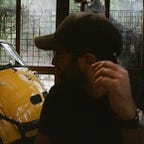Google introduced a real-time search feature that lets you know how busy a restaurant, coffee shop, or bar typically is at any given time of the week. Below is a revived case study from my time working on this project while at Google.
Role
- Lead designer within the Local Search team (central to Maps and Core Search). We focused on making information easier to find and use for local searches.
- Cross-functional Collaboration: Design thinking, brainstorms, and sprints with various teams (partners, product managers, engineers, motion designers, data science, and research) focusing on visual, user experience, and interaction design, topped with stakeholder and leadership reviews.
Impact
- Faster Decision-Making: Enabled users to access timely, reliable info directly in Google without leaving the platform.
- Improved CSAT: Increased customer satisfaction by enhancing decision-making confidence.
- Shared Framework: Created a foundation for future real-time initiatives across teams.
- Increased Query Volume: Boosted local traffic query metrics on both Google Maps mobile and web.
- Patent: Co-authored a UI patent with motion designer Matt Denzer.
Problem
- Tight Schedules: Maps and local search users found it hard to plan trips efficiently when pressed for time. Users often mistook average Popular Times for live information. Many users stressed the need to know how crowded places were before arriving.
- Un-tapped Geo Data: We had lots of ML-trained and accurate data but needed to use it more effectively.
- Unreliable Guidance: Users needed and wanted more accurate, real-time guidance, especially during dynamically changing experiences like dining out, visiting an airport or seeing how packed your local post office is during lunch.
Qual & Quant Research
- Users mistook Average Popular Times for Live: We saw an opportunity to elevate a common misconception into something tangible and helpful in real-time scenarios.
- Competitive analysis: We looked at other uses of real-time data across social networks, television, and other neighboring Google products like Driving and Navigation.
- Cases and Quality: Mobile usage to data quality was rising. Some places had better data due to more signals over time, making them lower risk. High-risk places like hospitals needed the most accurate data. We aimed to suppress places that didn’t meet our threshold, and elevate those that did.
- Sequence by Query Volume & Risk: Starting with low-risk locations as well as the highest traffic volume cases helped us prioritize verticals. Eg Dining searches were higher than Parks and recreational searches.
- Historical vs Live Data: Listings had a combination of average data over time and data that was triangulated in real time. Users wanted to get a sense of what busyness was like now vs then.
- Color, Animation, and Writing: Found that traffic color indicators created biases. Motion elements effectively grabbed user attention.
I’m typically on the go, and just want to know how busy a place is before I decide to navigate there.
Hypothesis
Combining average and real-time busyness data at local places will boost user confidence and provide a scalable framework for visual decision-making across Maps.
Principles and Solutions
- Timely: Offer real-time and historical data together, allowing users to see what crowds look like now vs typically.
- Unbiased: Interviewees felt traffic color encourages a negative vibe if red and in turn reduces traffic at establishments, thus we should aim for a less biased approach.
- Reliable: Ensure data accuracy and representation through creative writing and motion design. We also explored ways to capture feedback to help users feel they could contribute to the data.
- Trusting: Accurate data and writing was crucial, especially for time-sensitive locations.
- Flexible: Adapt to different user and place needs across various cases and verticals including dining, commodities, and government establishments, as well as Chain, Categorical, and Nav searches.
Sequencing
- Needs: Top queries and low-risk verticals with up to 24-hour coverage.
- Wants: High-risk verticals, desktop, and broader applications.
- Scale: Expand into Modernization efforts, evolving design system
Outcomes
- Better Decision Points: The pink indicator is easy to spot and helps users scan pages without creating bias.
- User-Friendly: The ‘Live Busyness’ feature is intuitive and builds trust.
- Versatile Use: Useful for checking flights, DMV wait times, and urgent care visits, leading to more mobile local traffic.
Conclusion
By addressing these challenges with focused research and design, we created a simple, user-friendly solution that helped improve the local search experience across Google Maps.
Interested in learning more about this project? Feel free to reach out at alex.lakas@gmail.com
